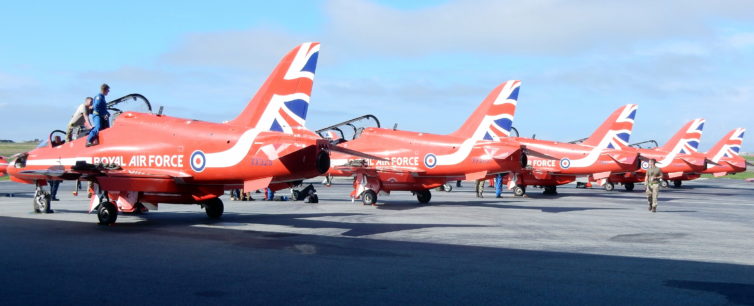
Now an Executive Officer with the Red Arrows, Squadron Leader Steve Morris has been flying with the RAF since 2002 – Photo: John Jamieson
This past September, I was fortunate enough to attend the Red Arrows’ media event in Vancouver, BC. During the event, I was given the opportunity to meet and interview Steve Morris, a senior pilot with the aerobatic team. In addition to learning about Steve’s day-to-day role with the Royal Air Force (RAF), he also talked about his career plans after aerobatics.
NOTE: In the interview, we discuss some of the team’s maneuvers and aerobatics. To provide some context, I’ll be including a few of my photos from the flypast. With a little help from the media guide, I’ve been able to identify some elements from their performance. I’ll do my best to explain the maneuvers as best that I can.
BRIEF BIO:
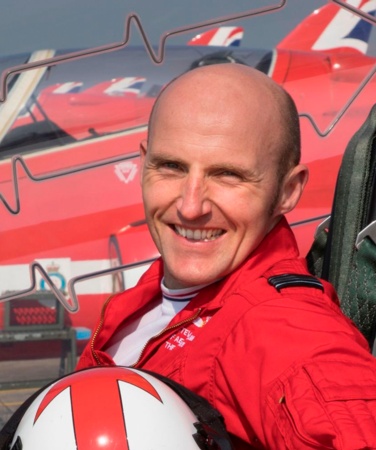
After returning to the Red Arrows as a member of the Front Five, Steve now flies Red 9 – Photo: RAF
Steve Morris was born in Sheffield in 1982 and joined the RAF in 2002. After serving as a flight instructor with 208 Squadron, Steve became the last pilot certified on the iconic Harrier GR9. Most unfortunately, I learned this piece of information after my interview with Steve. I’d have loved to learn more about his experience with the Jump Jet!
Moving on from the Harrier, Steve flew the Panavia Tornado GR4 Strike Fighter with IX Squadron. After serving overseas, Steve returned to the U.K. and continued participating in military exercises. In 2013 he transitioned over to the Red Arrows, returning to display flying. Considering Steve’s background on the Canadair CT-114 Tutor, his move to the Red Arrows likely came as no surprise.
Following his first tour of duty with the team (2013-2016), Steve returned to RAF Valley, where he’d been initially trained, as an instructor. In 2019, he began his second tour with the Red Arrows, now as a Squadron Leader.
Interview with Squadron Leader Steve Morris:
John Jamieson (JJ): Hi Steve, Welcome to Vancouver! It’s amazing to think that this record-setting tour began nearly two months ago in Halifax! What’s been your favourite moment thus far?
Steve Morris (SM): The moment that sticks out the most has to be our trip down to Niagra Falls. We were able to make a few passes over the falls before attending the Canadian International Air Show in Toronto!
JJ: A special day for sure! For this trip, you’ve had some long stretches of flying, beyond the team’s usual limit. Would you be able to walk us through a typical training day at the base?
SM: We’re usually in the air for 30 minutes at a time when preparing for a display. We’ll typically do three sets a day, five times a week. We’re constantly aware of the g-forces and mental concentration; they can really strain the body. That said, all the lads keep in good shape and maintain a heathy diet. Core strength plays a key role as well because we’re typically pulling 8 G’s during training!
JJ: You mentioned how the intensity of training ramps up prior to a big display. Is there an event in the U.K. that you look forward to on a regular basis?
SM: The Bournemouth Air Festival (similar to Fleet Week in San Francisco or SeaFair in Seattle) definitely stands out! They typically get 250,000 people out to the South Coast. It’s also a great event because they incorporate military and naval demonstrations as well.
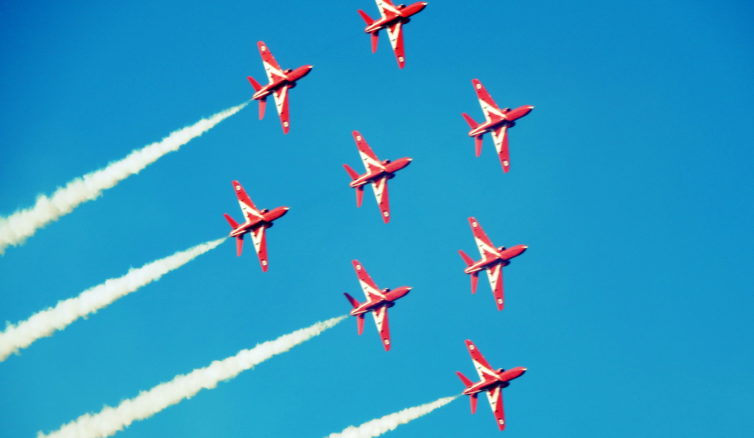
The RAF Red Arrows seen in their iconic Diamond formation – Photo: John Jamieson
Maneuvers and Safety:
JJ: As far as the display elements are concerned, is there a particular maneuver that’s more enjoyable to perform?
SM: I mean my favourite formation has to be our iconic diamond maneuver. That said, I also enjoyed performing the Heart and Sphere maneuvers when I was Synchro Leader (Red 6 and Red 7 form the Synchro Pair).
JJ: And is there one that’s maybe more challenging than the others?
SM: Well, all of our maneuvers have a certain element of risk; however, when flying with the Front Five, the slalom requires a lot of concentration. Weaving in and out of the line, at speed, is far more dangerous than it looks. Any change of altitude could be fatal!
JJ: On that note, do you require any additional emergency training? For example, do you need to be able to parachute from a certain height or have some experience?
SM: We have a currency whereby we have to egress (Ground Evacuation) on a yearly basis, perform simulator sorties (pulling the evacuation handle; aerial), and be able to parachute to the ground in the case of a disaster.
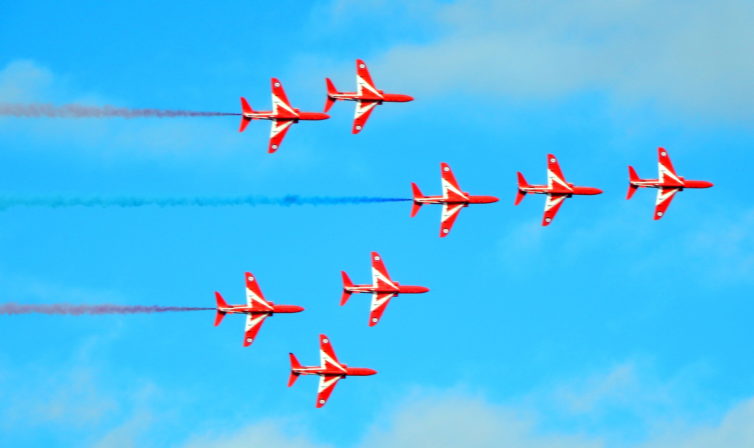
Another iconic maneuver! The seamless transition from “Apollo” into “Concorde”. Vancouver FlyBy, September 26th, 2019 – Photo: John Jamieson
Post-Red Arrows Career and Quick-Fire Questions:
JJ: Steve, we’ve talked a lot about your time with the Red Arrows and your career with the RAF. Going forward, what does your five-year plan look like? Do you have any thoughts of transitioning to the commercial side?
SM: Well, as a matter of fact, I’m at a natural transition point in my career. Within two years I’ll finish my tour with the Red Arrows, then I’ll hopefully move on to TUI (U.K. Charter Operator). With a young family at home, it would be selfish to keep flying jets!
JJ: OK, a couple of quick-fire questions to finish with! First of all, do you have a favourite between the Airbus A380 or the Boeing 747?
SM: 747, every day of the week!
- BOAC 747 retro livery – Photo: BA
- Landor 747 retro livery – Photo: BA
JJ: With British Airways celebrating its 100th anniversary, do you have a favourite Retro Livery?
SM: Hmm…it’s a tough one, but for me it has to be the BOAC livery! Just iconic!
JJ: It certainly is! It’s the Landor Scheme for me, but to be honest, they all look amazing! Thanks for your time Steve, best of luck for the rest of the tour!
SM: Cheers!
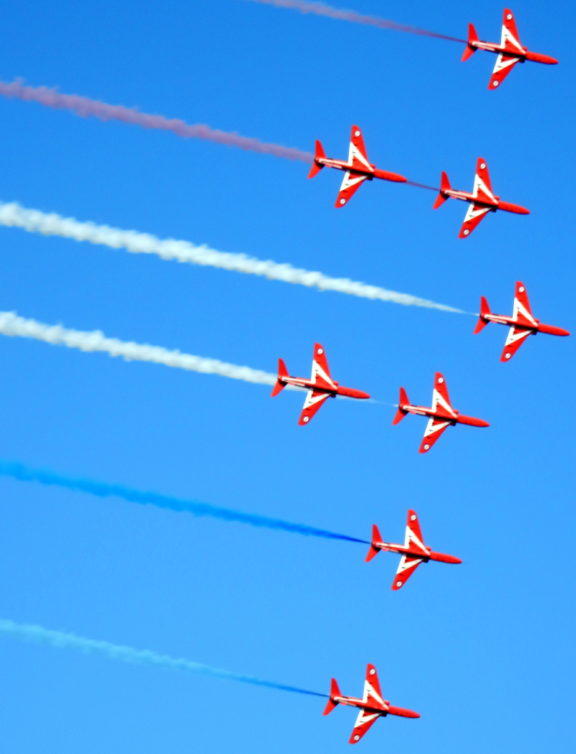
Finishing on a high! One of the team’s final maneuvers was the “Phoenix” formation! Vancouver FlyBy, September 26th, 2019 – Photo: John Jamieson
Wrap Up:
I truly had a great time with the Red Arrows. Having always been more of a “commercial” guy, I didn’t really know what to expect from the team’s display. I was more than impressed, as were the people who turned out to see them perform. It would be great to catch up with Steve in the future; I wish him all the best! If you’ve ever been amazed by the Red Arrows, you owe it to yourself to see them live!
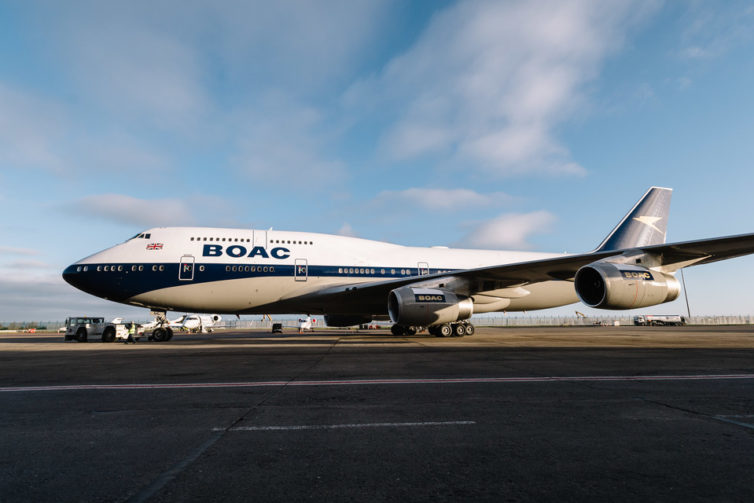
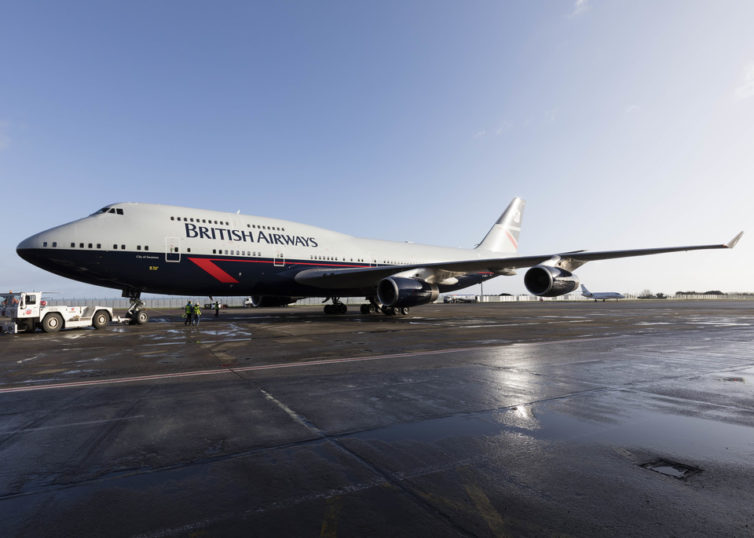
Comments are closed here.